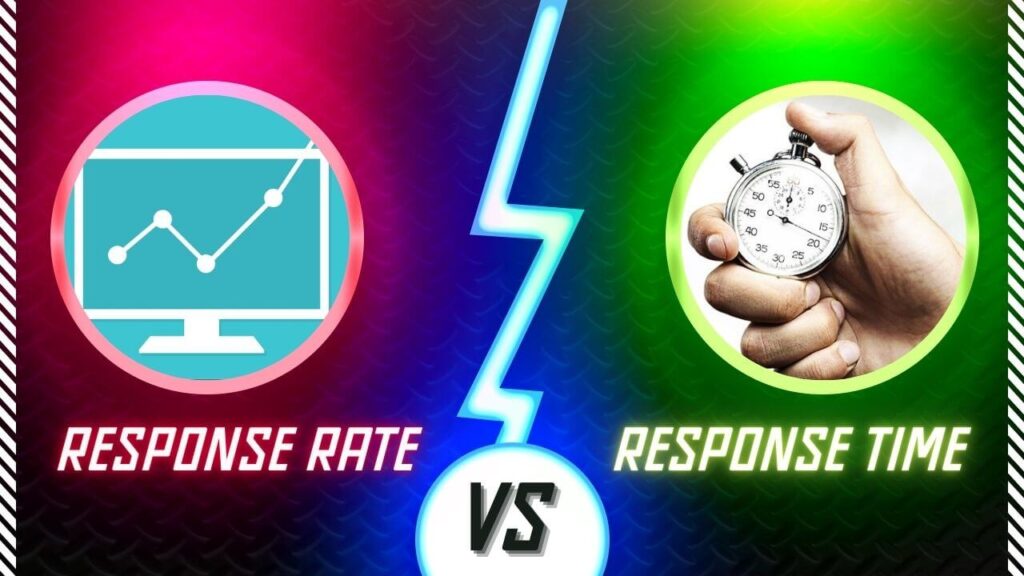Understanding Monitor Response Time and Its Impact on Your Experience
When I read various PC building subreddits and forums, there seems to be a lot of confusion around response times and what they actually mean. People always ask for 1ms because they believe lower is better, but there is so much more to it than that. Hopefully, this guide can provide some context to the specs that manufacturers quote and help you make an informed decision about your next monitor purchase.

What is Response Time?
“Response time” is basically the amount of time it takes for a pixel to change (“transition”) from one color to another, typically measured in milliseconds (ms). This is different from the framerate or refresh rate of a monitor, which is typically measured in hertz (Hz).
Each frame rate has a “refresh window,” or the amount of time available for a pixel to switch colors, which is linked to the refresh rate you are running. For example, if you have a 60Hz monitor, it will display a new frame every 1/60th of a second, or every 16.67 ms. As long as a pixel can complete its transition in under 16.67 ms, the monitor can provide a “true” 60Hz experience. If a pixel takes longer than 16.67 ms to change, it would be in the middle of a transition when it receives a new instruction to move to a new color, leading to ghosting or smearing on the screen.
Here are some common refresh rates and their corresponding windows:
- 60 Hz = 1/60 = 16.67 ms
- 75 Hz = 13.33 ms
- 100 Hz = 10.00 ms
- 120 Hz = 8.33 ms
- 144 Hz = 6.94 ms
- 240 Hz = 4.167 ms
Notice anything? Even at 240 Hz, a “4 ms” monitor is still within the refresh window for a true 240 Hz experience. But just because a monitor is advertised as “4 ms” (or even 1 ms) doesn’t mean it will be suitable for the refresh rate listed above. That’s because any response time you see on a monitor box will most likely be “G2G” or gray to gray. Unsurprisingly, response times change depending on the color that is currently displayed and the color you wish to transition to. Some transitions take longer than others. The “average” response time may be 4 ms, but if certain transitions take much longer than that, you’ll still end up with some smearing.

What About Overdrive?
Overdrive is similar to overclocking a monitor, where you can provide higher voltages to the pixels in hopes of achieving faster response times. Usually, monitors allow you to select from Off, Low, Normal, or Fast/Extreme overdrive modes.
Here is an example response time chart with Overdrive OFF, which shows various response times for different transitions. It can achieve an average G2G response time of 5.88 ms with 83.5% of transitions happening within the 144Hz window.
Here is the same monitor with Overdrive set to EXTREME. Now it has an average G2G response time of 1.72 ms, with 100% in the window.
Speed and Accuracy
Overdrive OFF
Overdrive EXTREME
Why wouldn’t you use the EXTREME mode all the time? Well, response time (speed) is only half of the story. The other half is accuracy. Frequently, these very fast response times are only possible with very high error rates. This means that in the monitor’s rush to transition quickly, it overshoots its target color and has to correct itself. This creates “inverse ghosting,” where a lighter trail appears behind moving objects as the monitor corrects itself.
To fully understand what a monitor is capable of, you have to consider both speed (response times) and accuracy (overshoot). Usually, the ideal Overdrive mode will provide a balance of speed and accuracy. For the monitor above, the Normal OD mode is recommended since it provides a near 4 ms average response time with 100% of transitions within the window and almost no overshoot.

What About 1 ms?
Does a 1 ms monitor guarantee the best experience? Not necessarily. In theory, a 1 ms monitor with no accuracy issues would provide a very clean image. At 144Hz, it would be displaying a frame every 6.94 ms. This means it would be transitioning for 1 ms and providing a static image for the remaining 5.94 ms. Compare that to a monitor that may need 5 ms to transition, where your eye would be viewing “in between” frames the majority of the time.
The reality is, perfect 1 ms monitors don’t really exist. The monitor discussed above is an IPS monitor that is advertised as 1 ms. However, the 1 ms spec is only kinda-sorta achieved via the Extreme overdrive mode (to 1.72 ms G2G), which introduces very poor accuracy. That’s not a tradeoff many people would knowingly make.
How to Evaluate Monitors?
Instead of trusting manufacturer specs, understanding the differences in monitor types is a great place to start. It can help you weed out unrealistic figures. Generally speaking, TN monitors provide the fastest response times, then IPS, then VA. If a VA monitor advertises 1 ms response times, it’s a safe bet that those are fudged in some way. IPS and VA monitors may have similar average G2G response times, but most IPS transitions tend to fall close to the average, whereas VA may have some transitions that are quick and others that are longer. In other words, the standard deviations are not the same. The telltale sign of a VA is slow dark transitions.
But the best way is to seek out expert reviews for the monitors you are considering. Reviews that point to the advertised response times and state “this monitor has great response times” are almost worthless.
Keep in mind that the exact monitor you are researching may not have a review from one of these sites. In this case, you may want to look up the LCD panel being used, and see if another monitor that uses the same panel has been reviewed. The results may not be 100% applicable (since each manufacturer uses a different overdrive implementation and other design differences) but it may give you an idea of the physical speed limitations of the panel itself.
Conclusion
If you take away just one thing from this, remember that a “1 ms monitor” isn’t automatically better than a 4 ms one. In most cases, it just means the 4 ms manufacturer is being more honest about what the monitor can do during normal usage.
Understanding the nuances of monitor response time can help you make a more informed decision and ensure you get the best performance for your needs. Whether you’re a gamer, a graphic designer, or just someone who wants a smooth visual experience, paying attention to both response time and accuracy is key.
For the latest reviews and more in-depth analysis, be sure to check out trusted sources like TechSpot, Hardware Unboxed and tftcentral. Happy monitor hunting!






